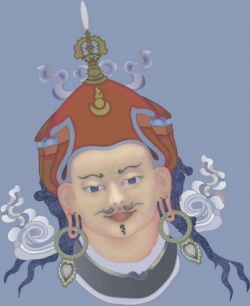Martial arts categories
Martial art styles may be divided into four categories, each determined by its primary focus
- Self-defense/professional use of force. This category is the most limited in focus. Its only purpose is the use of force to resolve a violent situation. This category includes styles such as Krav Maga or Musti Yudha. This category of martial arts training may range from a weekend combat course for the public, to military close-quarter combat and killing techniques. The techniques are for high-risk situations that must be resolved immediately. The techniques are simple, effective, and often brutal. It does not take too long to learn the techniques, usually only a few days or months. Unless you are actively involved in a profession or lifestyle where you are constantly in danger, your interest in this category of martial arts will usually fade quickly.
- Traditional/physical art/self-discipline. This is the category most commercial schools teach, such as taekwondo, various styles of Karate, Judo, various styles of Kung-fu, etc. The greatest benefits from the martial arts are often found in this focus, such as self-confidence, exercise, courtesy, self-defense, competition, mental focus, and self-control. Social interactions are also found here. Friendships and community involvement are common by-products of a martial arts school. In this category, troubled children often bloom, their grades improve, and unacceptable behavior subsides, as they get farther and farther into the art. This category takes years of training to perfect so interest usually lasts for years, even a lifetime.
- Spiritual/health. These are the gentle arts that help develop inner peace and harmony, such as Tai Chi Chuan, Ba-qua, Hsing-i, etc. They are poetry in motion and are of great benefit to health. These arts gentle enough for all ages and they may be practiced for a lifetime. They are taught for reasonable prices or for free at community centers, YMCAs/YWCAs, colleges, etc. Cardio type, pseudo martial arts, such as Tae-bo, Cardio Kick Boxing, etc., fall into this category, however, do not confuse them with self-defense training; they are not designed to teach actual self-defense.
- Sport/competition. Tournament fighting is a demanding and challenging sport that requires great dedication and intensive practice. There are entire marital art styles dedicated to sport and competition, such as the sport version of taekwondo. The category of martial arts is great for safely channeling young and aggressive energy, but may also be a family event, with family members attending tournaments to cheer for and encourage the participant.
Each category has a specific focus or purpose. While there is a certain degree of crossover, what works for one category may not work for in another. Each category has its strengths and weaknesses. Since it is nearly impossible to master all four categories, instructors usually focus on just one. An instructor who is good in one category is not necessarily qualified to teach another, however, some instructors will tell you they are qualified to do it all.
Along with different purposes come radically different attitudes, training procedures, rules of engagement, and standards of conduct between the categories. These differences have a profound effect on what you learn and how long you will want to keep training. If you understand the differences between the categories, you may more easily find a school or course that fits your needs and wants.

